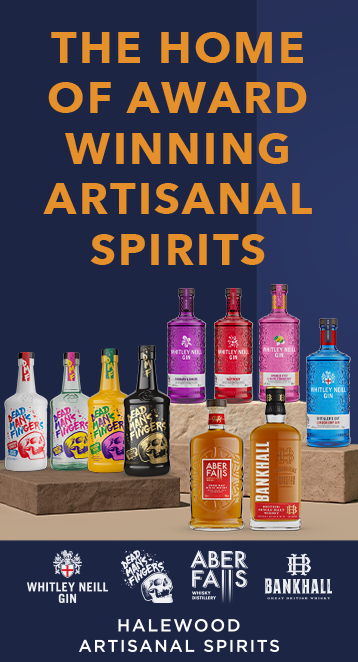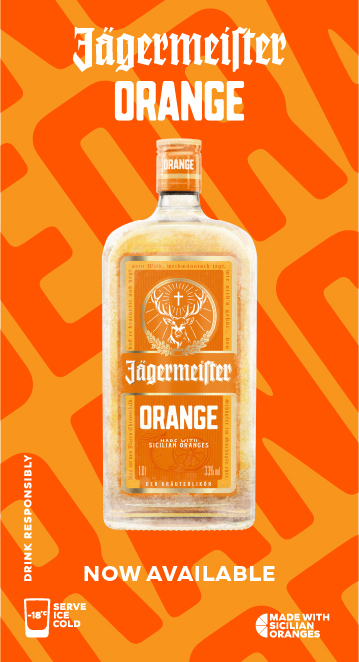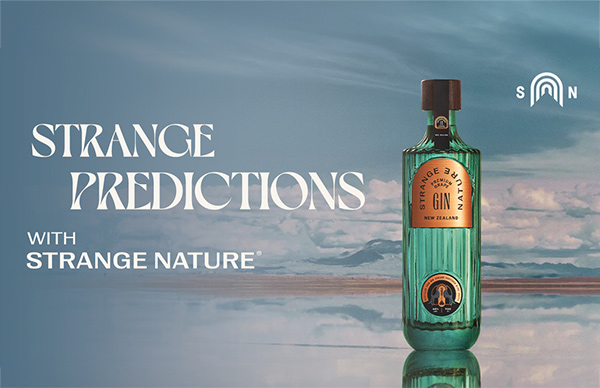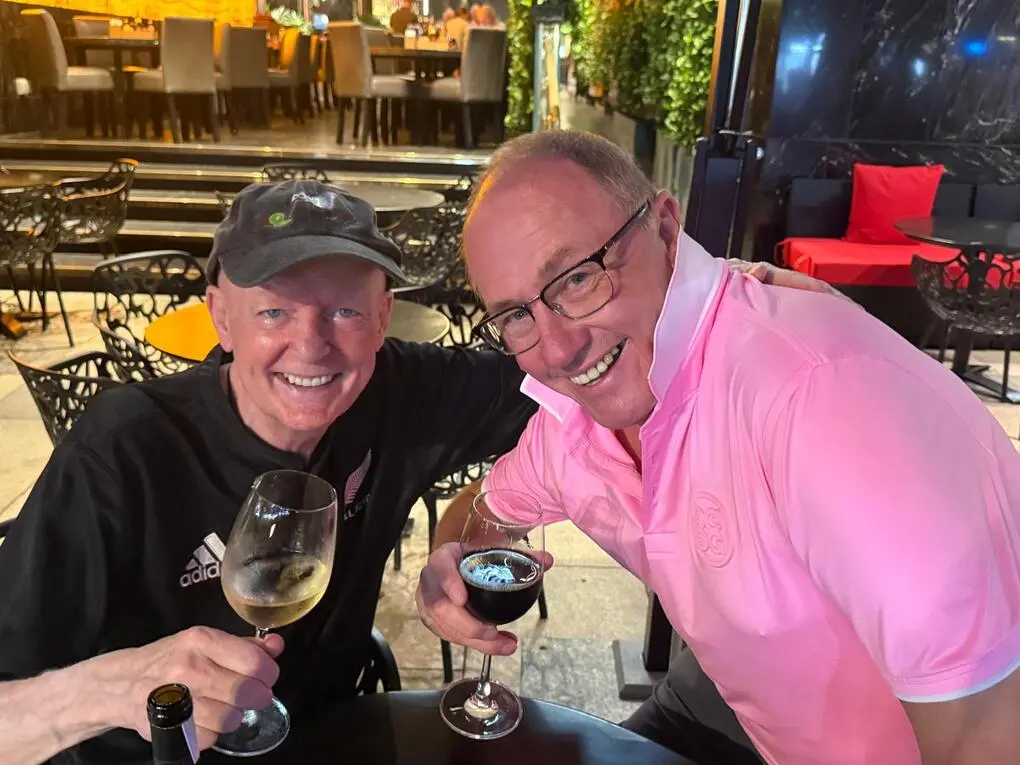In this interview timed to mark 300 years of the House of Rémy Martin, CEO Jean-Philippe Hecquet talks about honouring a glorious past but also crucially about projecting into the future. In conversation with Dermot Davitt he assesses what innovation means in a Cognac context and how the ‘consumer first’ focus of the house is taking shape, as Rémy Martin seeks to recruit the next generation of Cognac lovers.
Tell us please what this 300th anniversary signifies for the brand and what it says about the past, present but also the future of Rémy Martin?
Jean-Philippe Hecquet: The 300 year-anniversary represents a unique moment. We want to celebrate the past of the brand and the family story that goes back five generations. We are involving our teams, the wine growers and the community around us.
We also have many activations around the world to support our celebration of the anniversary.
It’s a good moment to communicate and remind people about the story, values and quality of Cognac itself. Cognac is known by name of course but to many its history, its production, its reliance on time and terroir, its heritage and know-how, are not that well known.
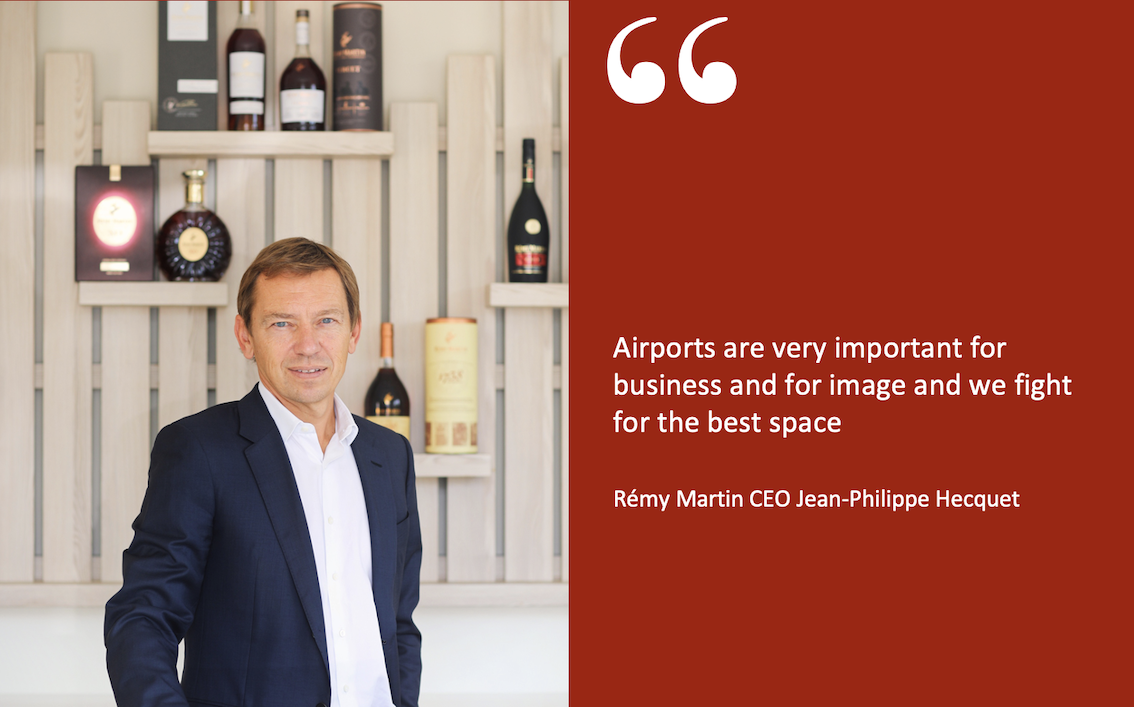
So we leverage the knowledge and history but also, in a challenging environment, this gives us a positive moment to mark this great achievement.
How integral is that element of community you note?
At Rémy Martin we speak of family and the relationship between the wine growers and the Hériard Dubreuil family is very close. Rémy Martin owns just 250 acres of land so the rest of our eaux-de-vie comes from wine growers in the region. We rely on each other. We consider them part of our family and celebrate with them too.
Their story is also mostly about family businesses that run from generation to generation and the transmission of knowledge.
While this is about marking a proud history, the future is just as important. With that in mind what does the over-arching theme ‘We Dream Forward’ introduced for this year’s celebrations mean to you?
We want to be here for 300 more years so we are asking ourselves what the future should mean. Rémy Martin was always visionary. It was the first House to focus only on Fine Champagne, removing VS and the volume approach to focus on a prestige, value approach. That was a big step by the family. We want to continue pushing the boundaries with many projects that will articulate how we will ‘Dream Forward’.
We have to be modern in how we sell, how we communicate and how we make Cognac. You will see much more innovation in these areas in the years ahead.
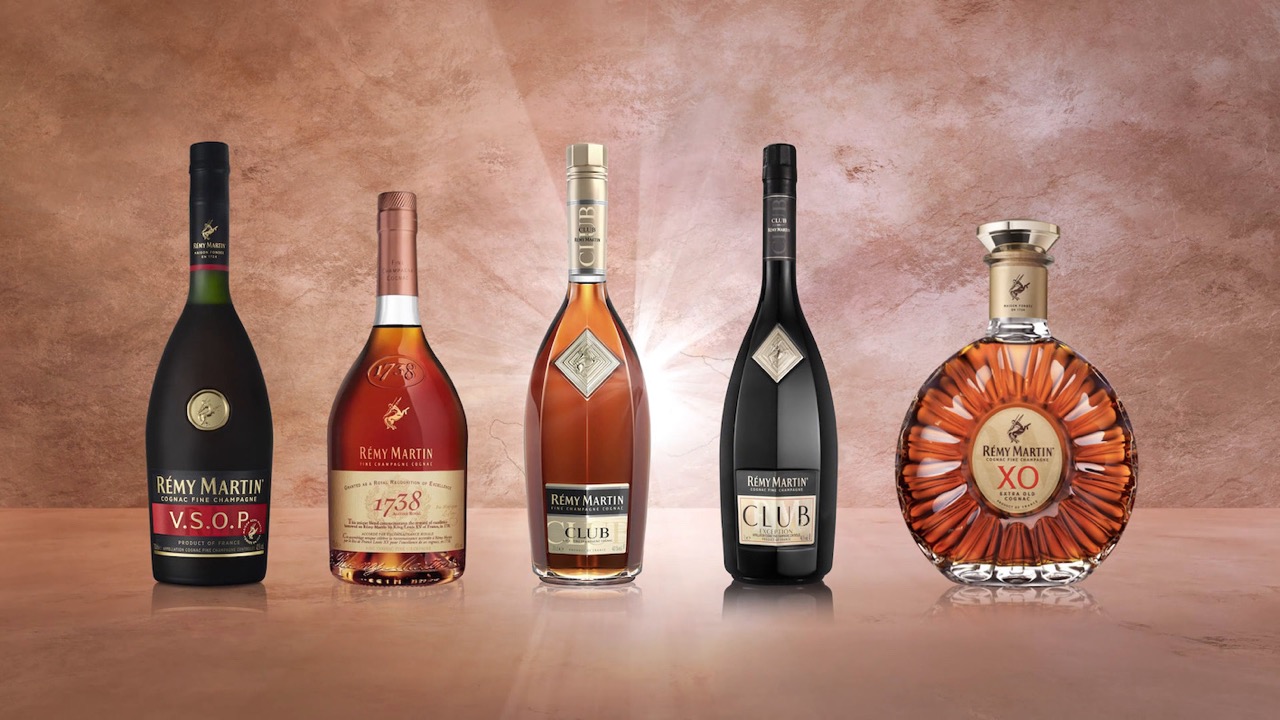
A new generation of consumers comes with a different relationship to the product than other generations have had. How they drink is different. There is a new view of the cocktail and how people mix drinks is changing.
The new generation is less loyal to one brand; instead they want to enjoy a moment, an experience, so we have to fit in with those expectations. That is an important element of dreaming forward: listening to how the consumer wants to consume and to enjoy.
With that in mind, what is the big challenge in convincing the new consumer to learn about the virtues of Cognac?
For me the main competition to Rémy Martin lies not in Cognac, in which there is apace for many houses, but in other spirits.
Cognac remains small in overall volume terms and we have a strict cahier des charges, with limits on what you can do.
It’s outside that world where we need Cognac to shine. All of the Cognac houses help the category have a voice even with different strategies and products. We can live together and make Cognac desirable in our own way.
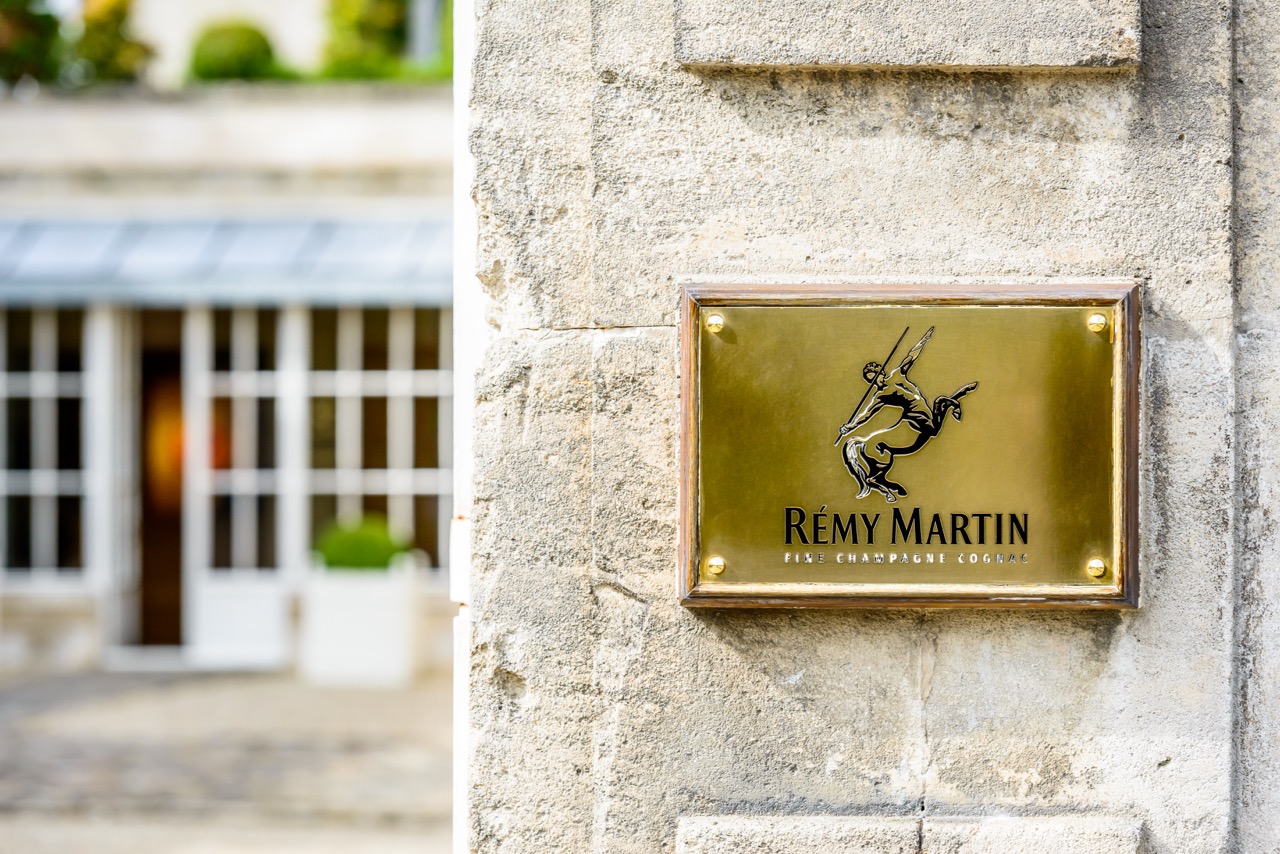
So my big battle is to build awareness of Cognac. If you visit the region you understand what the value behind the product means. Once you know it then it’s easier to engage and to tell the story.
Our role is communicating and educating and that’s not so easy from a shelf in a 30-second window. That’s why we partner with [Grammy award-winning musical artist] Usher who has a wide audience, why we have Superbowl advertising and how we try to make people entertain the idea of this luxury living product and the values of terroir, time and savoir-faire that goes into it. This is what we want people to understand.
In that light what more can you do to help super-charge Cognac’s growth, and are there any lessons from luxury that can help you achieve this?
My background in luxury [Hecquet was previously CEO of fashion house Lanvin -Ed] is perhaps part of the reason I am here. The aim is to focus not on the distributor who sells the product but on the consumer who drinks it. They are the judges. And in this business reaching out to the consumer is complex.
Digital plays a big part in this direct approach everywhere in the world and it helps us learn about the client. There are many layers here. We use a lot of focus groups, we test digital approaches and understand the expectations and we have CRM programmes that allow us to engage better.
Consumers today also expect their favourite brands to interact positively with nature and the environment, something that has been a central focus here for some time.
Very much so. In 2012 we were the first House in Cognac to attain High Environmental Value certification. Now 60% of our wine growers are certified in the same way and many more will come in the next few years.
So if we want to be there in 50 years, never mind 300, we have to be virtuous in protecting the terroir. Production and bringing the growers with us on this journey is one element as we strive to achieve our key indicators.

Another aspect is removing unnecessary packaging and how you carry less environmental impact. We removed VSOP packaging three years ago which was a big decision. Some consumers at the time expected the box as part of our luxury statement, and some still do, but many others accept that we should remove this.
We know it remains important for gifting so we kept the VSOP gift boxes only for limited editions. Additionally, we try to improve the bottle itself from weight to design. What is important is that there is no loss of value – we focus on the liquid and the bottle.
Sometimes luxury can be about not having packaging. There are multiple angles to this, from the level of knowledge and expectation around environmental concerns. But we are looking at this now in light of our big targets – by 2028 all wine growers to be certified and by 2050 zero carbon emissions.
We all have this in mind and you see that strongly in the new generation in our teams. It’s not hard to have people work on innovation when these sustainability goals are at its heart.
On that question of innovation, what are the challenges in marrying tradition and modernity at such a storied brand? How do you work with Cellar Master Baptiste Loiseau to create products that match the strategy?
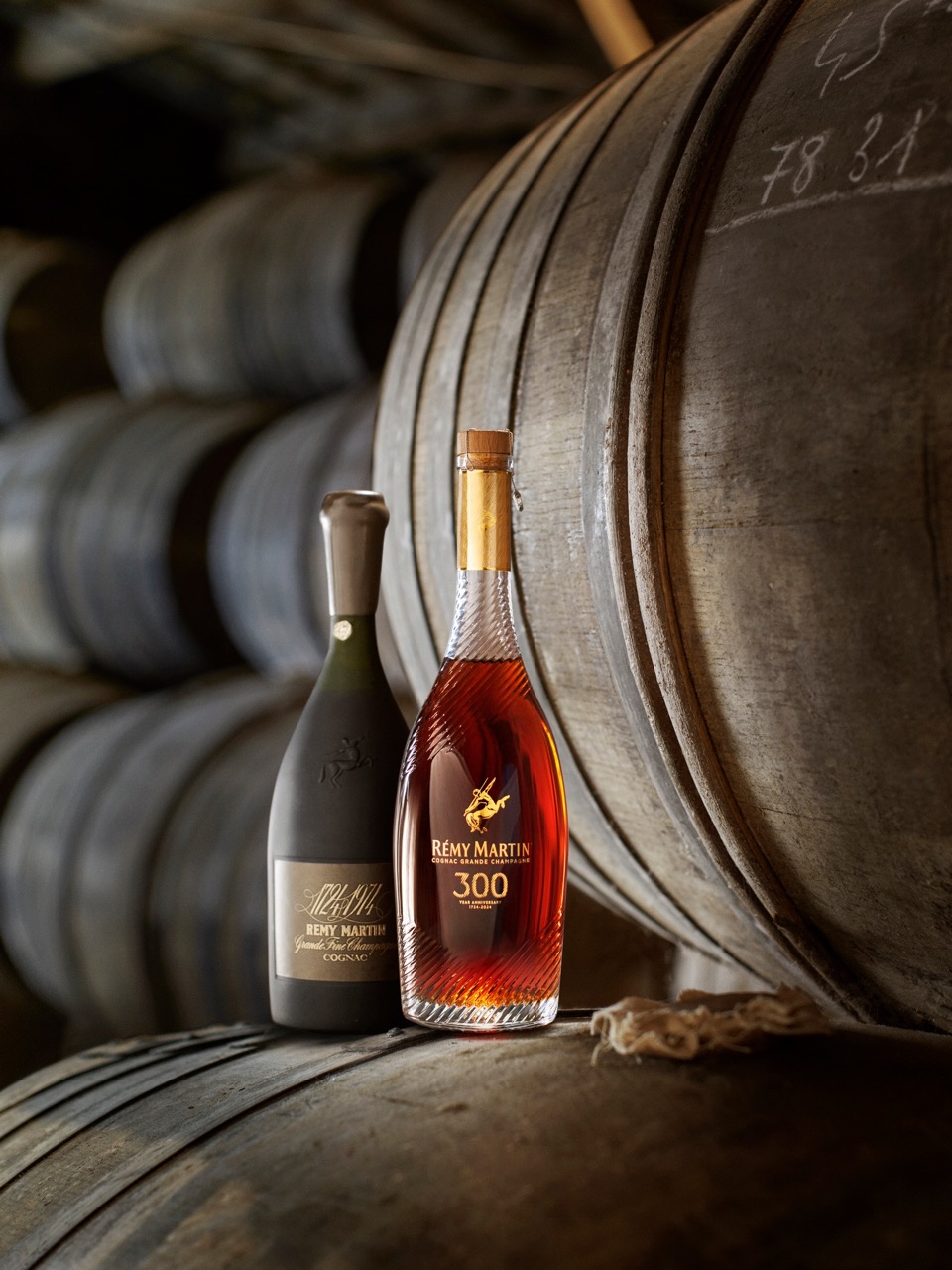
I feel fortunate to be in a family business with the fifth generation. The family has seen so much and they stay calm with the long-term view in mind.
They stick to the value objective of growing our Rémy Martin 1738, our Rémy Martin Club in China, our Rémy Martin XO and a focus only on Fine Champagne.
It’s better for me to have a family with this vision than a short-term, stock market focus. They also offer great guidance.
Alongside that influence the master is Baptiste who understands and digests trends and consider innovation.
But innovation is not about changing the liquid, although you can still do, this, for example with the 300th Rémy Martin Anniversary Coupe (a key element of the Cognac house’s tricentenary; click here for a related interview with Baptiste Loiseau).
If people love Rémy Martin it’s about their love for the liquid. We can still introduce newness, such as Club Exception that we launched last year in travel retail as a twist on our Club line, which is now among our best-sellers in China.
Innovation is also about mixology, about food pairing, about other ideas that we learn from the consumer and the trade.
Where does LOUIS XIII fit in with this strategy today?
LOUIS XIII is also celebrating, in its case 150 years since 1874. The distribution approach is a little different and we can be more direct to consumer in some regions with our approach.
We were the first Cognac house to open a full spirits boutique in Beijing in 2016. That was a breakthrough and we now have almost ten stores in China. We have the latest in Plaza 66 in Shanghai, the most prestigious mall in the world. Besides the fact that LOUIS XIII is a luxury statement, it also means we can go direct to consumer as we have limited quantities. And in a boutique you can talk to the client and explain what’s behind Cognac and this liquid in particular.

The franchise model is a good model for us, we test and learn and it allows us to scale up when D2C takes time. It’s fairly recent so will be interesting to see how that happens.
(Q&A continues after the panel below)
‘Opulence Revealed’ – On location at the House of Rémy MartinSpend any time in the vineyards and distilleries of Cognac, and you understand quickly that this region’s most famous product is not simply about luxury and status – with which it is closely associated – but about land, family, history, knowledge and above all, enjoyment. If one could bottle the experience here and share it with drinks enthusiasts around the world, it would open a whole new audience to its wonders. As House of Rémy Martin CEO Jean-Philippe Hecquet told us (see main interview), Cognac as a living product is often misunderstood, and the values of terroir, time and savoir-faire that go into it an opaque mystery to so many. A few hours at the home of the brand in Cognac opens up much of this mystery, as it did for me in the company of Rémy-Cointreau CEO for Europe, Middle East, India & Africa, Asia Pacific (excluding Greater China) & Global Travel Retail Ian McLernon and Chief Maison Ambassador Alexandre Quintin recently. 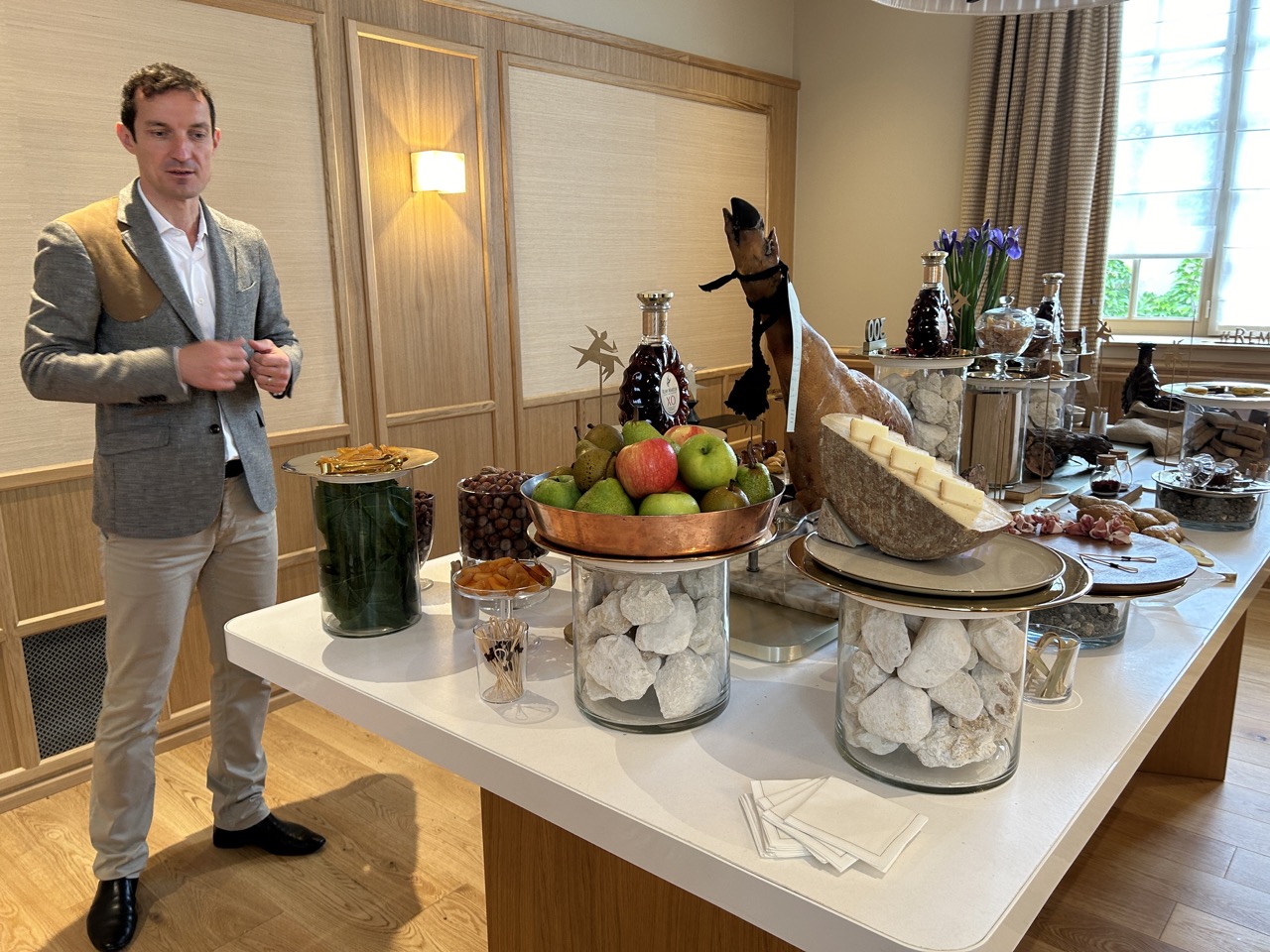
A visit to the Juillac-le-Coq distillery and its reception room facing the vineyards marks a memorable starting point, before a visit to the new-look historic Rémy Martin house, transformed after three years of renovation. From the distillery entrance, cast a roving eye across the land and you quickly come to understand the importance of nature and community that go into any Cognac product. Rémy Martin owns 270 hectares of its own vines but that only serves 4% of its needs for eaux-de-vie – the rest comes from 800 growers around Grande and Petite Champagne, who began working with the house in 1965 to help make it the global powerhouse it has become today. As partners with the group for almost 60 years, the family growers – like the Hériard Dubreuil family that controls Rémy Cointreau – pass their own businesses from generation to generation.  They are also on the same journey with Rémy Martin to become a more sustainable Cognac house – a journey that is demanding and without short cuts. The strict cahier des charges dictates the distilling process, with care and caution the watchword as the family eyes long-term quality over short-term volume needs. A highlight is seeing and tasting the eaux-de-vie at its earliest stage after distillation, before it is added to cask. This presents a clear viscous liquid, already fruity and textured even if stronger than the final spirit will be. Even at this point (within three to four months of harvest) the makers know what grade it will achieve in the end, from VSOP through to LOUIS XIII. From there to the historic house, and a rare treat under the apt title ’Opulence Revealed’. In the most elegant of tasting rooms, we travel through the full spectrum of Rémy Martin XO via a library of aromas and flavours combining food with Cognac. This experience shows off the many fruity to floral notes of XO and the rich flavours that the expression evokes. 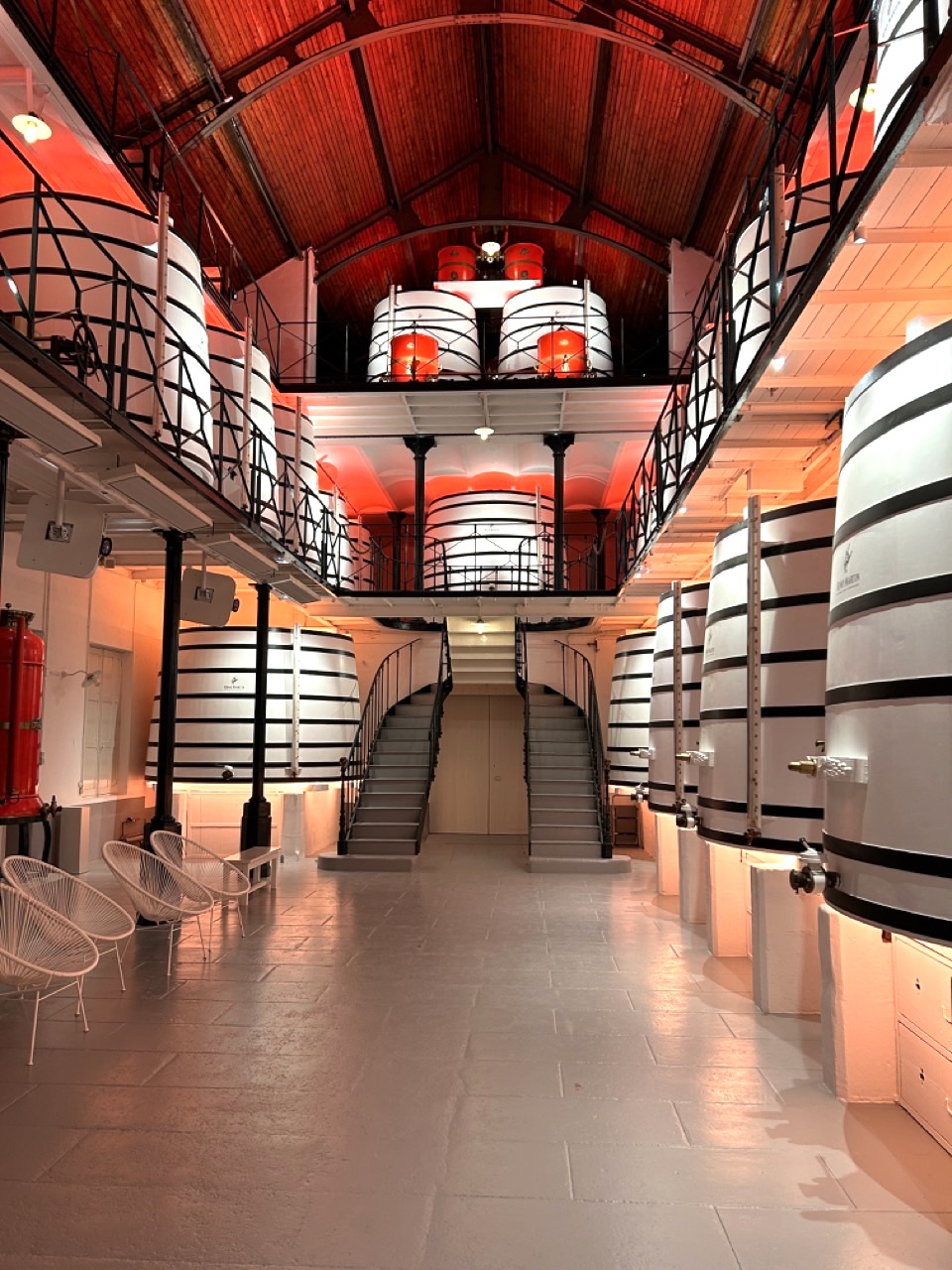 Highly evocative tastes emerge from a myriad of ingredients including dried fruit, bread and pastries, butter, nougat, honey, vanilla, cinnamon, ginger, chocolate, cocoa beans, macaroon, cheese and ham, even a goat’s cheese cake, all from the region – part of a rich visual, taste and scent experience. Pair some of the sweeter flavours with XO and it’s like jumping into a Cognac barrel itself. Many other ingredients give off hints of delicacy and invoke flavours across the range, at times savoury, salty, bitter, spicy, sweet in parts, all of which marries wonderfully with the complexity, fruity but floral taste and dry finish of the XO. The balance of food and Cognac offers a balanced burst of flavours. The tasting table at the historic house has been developed by Rémy Martin teams using their own local ingredients, and notably in travel retail, will be seen at a pop-up at Paris Charles de Gaulle Airport (with Extime Duty Free) during the 2024 Olympic Games. The pairing of food and Cognac aims to encourage exploration of the product and to allow people to play with their tastes. Sated by this experience, we delve into the treasures of the restored 19th century building, where across three floors and over 500sq m visitors can inspect collectors’ items ranging from the royal agreement of 1738 to today’s CSR commitments, works inspired by the centaur, Rémy Martin’s iconic emblem to the history of LOUIS XIII Cognac. Here the guest is immersed in 300 years of remarkable history and an eclectic range of conversation pieces, taking in Rémy Martin’s innovative limited editions, its connections to the world of cocktails and crucially, its close links to travel over many decades. There is also a technological showcase as part of the experience, offering a glimpse into the Rémy Martin world through evocative video and audio. 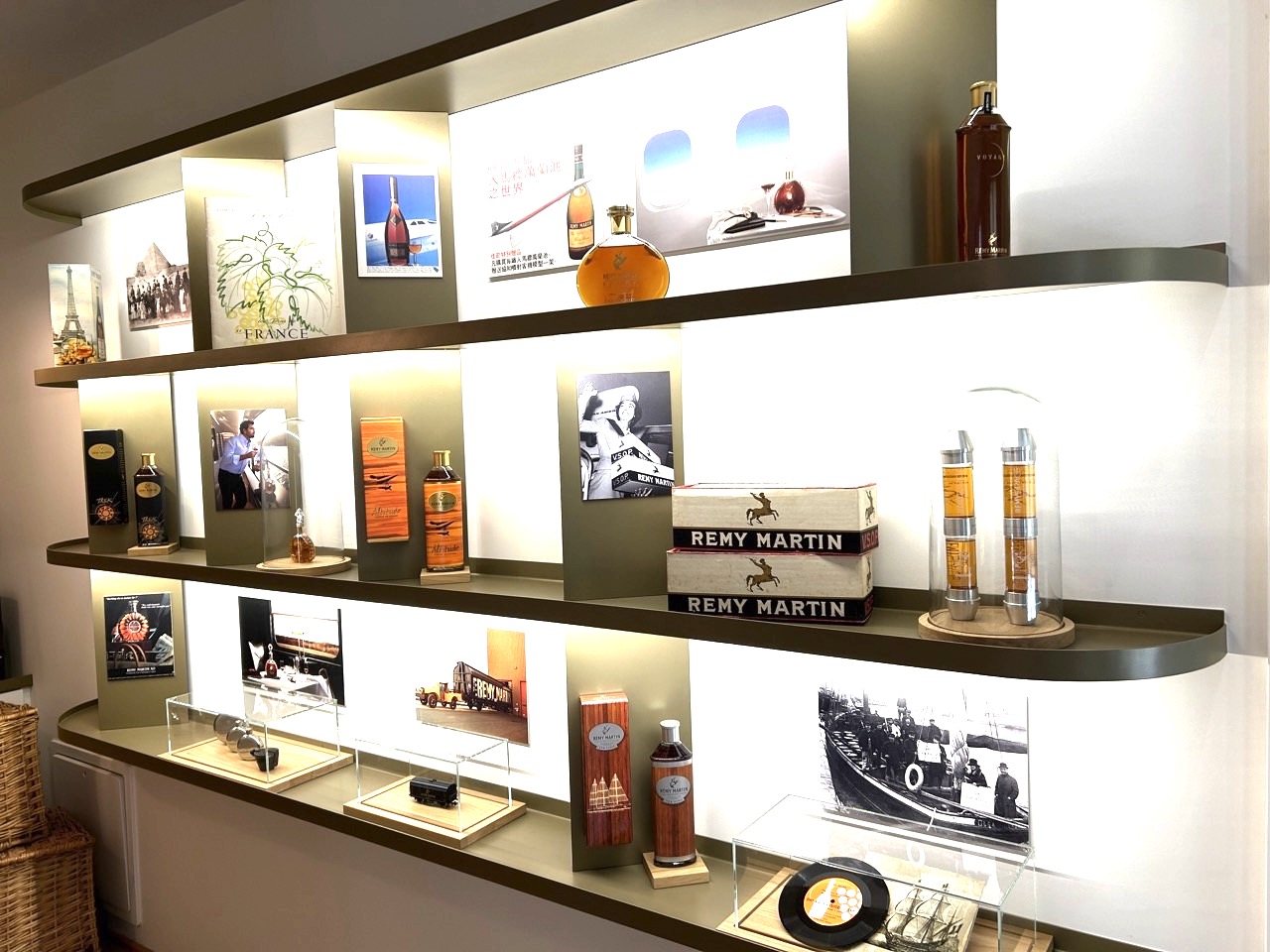 A personal highlight comes towards the close of day, as we visit the Grollet family estate.  Dedicated to the most prestigious of Cognacs, LOUIS XIII, the great vineyards and its ageing cellars transport you back to another age. You can see how the connections from a century ago stretch into the present day, with knowledge from each previous generation feeding innovation in the next. There are wonderful echoes of how those artisans long passed made use of wood and charcoal, filtering into the barrel, and styled bottles by hand – and a close-up view of some of the oldest of any stills across the Rémy Martin estates. Most thrillingly of all, the cellars of the original estate house at Le Grollet house many ageing tierçon barrels of LOUIS XIII – in a cellar with no heating or other temperature controls but made from the earth, allowing it (and its precious contents) to breathe. The LOUIS XIII we nose is elegant beyond measure, with spicy notes abounding, fruit to the fore, evoking the senses of a polished table, hints of tobacco or a deep forest after the rain. You then taste, feel it gradually rise onto your palate, with sweet honey to the fore, a mellowness, taking up expansive space on the palate on first contact. After that it’s about wave after wave of texture and aroma, richness, density, complexity, yet mellow and soft. The last drop, we all agree, is the most memorable, sweet like a farewell kiss. From a memorable visit, some travel retail takeaways. The brand house and parent company Rémy-Cointreau underscored time and again the value of travel retail as a showcase and brand-building environment. The company is deeply committed to investing with partners to grow value across the industry Trinity, as a luxury house of brands, says management. There are challenges in the market, including ensuring enough stock is available for when travel surges once more in Asia, especially among outbound Chinese. But Rémy-Cointreau also takes a long-term view, building for the future rather than focusing on the near-term sales target. That commitment is reinforced by recent and upcoming recruitment, with the travel retail division led by CEO Global Travel Retail Fida Bou Chabke set to add two regional heads to the business. That will help the brand owner seize opportunities as it invests at key airports as well as in the emerging cruise business – and to build its sales in the travel channel in which Rémy-Cointreau has long been a pioneer at the luxury end. |
How do you consider the role and relevance of the travel retail channel for the brand today?
Travel retail is very big for us and a channel in which we invest a lot. It is not back to where it was but it’s growing again.
Airports are very important for business and for image and we fight for the best space. It’s a marketing tool. If you’re at Dubai or Paris Charles de Gaulle or other airports, there is value in communicating about your brand to people who sometimes have more time than they do on the domestic market. People are open to looking, listening and learning. This is a highly strategic channel for us.
This year we plan pop-up stores to communicate across the best travel locations. It’s a good hook, a modern way of communicating and you can draw attention well. Some pop-ups today are close to being true boutiques.


We have revisited the whole brand expression so we are more impactful in our visual identity, and are rolling out new elements that are consistent across our estate for the brand, including in travel. Consistency in luxury is mandatory and sometimes in spirits you don’t see it, depending on the distributor or retailer. You need to work with the partners about where you need to be present.
(Note: A major pop-up will open at Paris Charles de Gaulle in partnership with Extime Duty Free from 2 August, with a further pop-up campaign through Dubai Duty Free in November, alongside other 300-year activations around the world of travel retail.)
What does a Rémy Martin brand health check look like today as a fourth century begins?
At group level we want to be the company of luxury spirits, with Rémy Martin continuing to play a major role.
On drinks strategy, we want to engage with the right partners with the right animations. It looks obvious when we say it but is a lot of work.
We need to take care of the supply and sourcing, the wine growers, the terroir and have the right collaborations. Then in the end it comes back to the consumer who is the ultimate judge.
Above all you need to understand the next generation. How do I ensure I’m relevant in 20 years? It’s about being relevant to the next wave of consumers, being aligned with the trends. Drink less but better is exactly our value. We target the high end, not the low end.
My brand cannot get old with me, which is why we have a young team, a young Cellar Master in Baptiste and we really integrate the views of youth and multi-cultural teams into our strategy. We must have open minds.
That’s important. France is tiny for us in relative terms – though we hope it will grow – but we must have an international view, and travel forward communicating with a consumer who really understands what is behind the Cognac. ✈
Creating a compelling consumer narrative
On partnerships: We talk about Trinity or Quaternity, but they don’t always materialise. There are still a lot of guardrails between the various layers of what I refer to as the route to the consumer. On price: I do have concerns that we may be devaluing the journey with excessive price promotions. The first thing you see is red in a store, and it’s not the brand logo, it’s the price point. On travel retail as a career option: If you want to be a General Manager, you should want to be an Area Manager in travel retail because you have autonomy, it’s dynamic, it’s fast. You have to be on top of your business, you’re managing people, you’re managing price negotiations. On consumer engagement: Our goal is to have people purchase items they truly desire, not products they don’t want but ones they buy out of excitement for the compelling narrative we provide. On sustainability: Most of our products are deeply connected to the land, so taking care of our sources is vital to ensuring the longevity of our products and brands. Being a family-owned business means looking ahead for generations. On driving conversion: The key is effectively conveying the unique stories behind each of our brands. It’s not just storytelling; it’s about living those stories. *Click here for the full interview. |



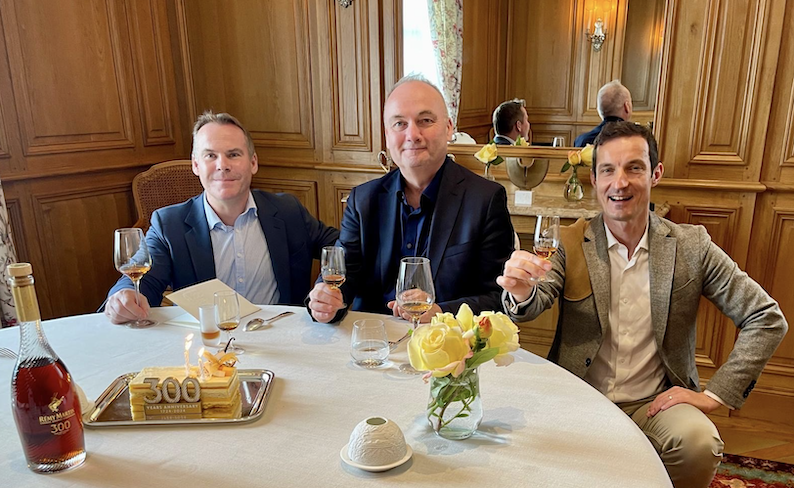
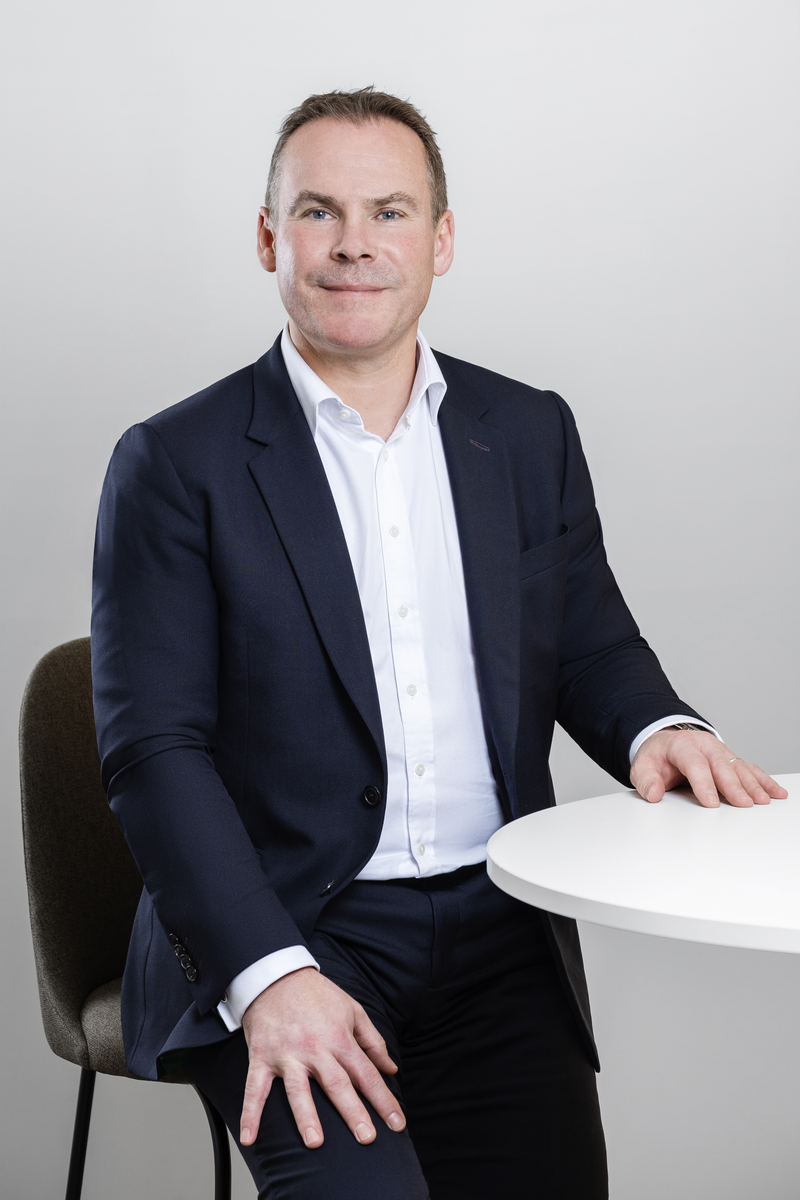 (Excerpts from our
(Excerpts from our 
